Uncomfortably Numb in Punjab
A journey through the state’s drug-paved highways and alleyways
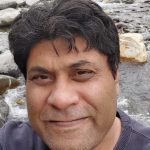 Moinak Mitra
Moinak Mitra
 Moinak Mitra
Moinak Mitra
 |
30 Aug, 2018
|
30 Aug, 2018
/wp-content/uploads/2018/08/Punjabdrug1.jpg)
HAAN UD-DAA PUNJAB/ Arre haan ud-daa Punjab. The wild beats and psychedelic set-up of the song in the 2016 film Udta Punjab strike a grim note while scouring villages, towns and cities of what was once known as the home of India’s most industrious people. In several parts of Punjab, smoking up, sniffing in or injecting some form of heroin, or another, seem to be the norm. From Hoshiarpur amidst the lush fields of the Doaba region, to Ludhiana, the ‘Manchester’ of Punjab, the entire stretch is dotted with hamlets of drug smugglers and peddlers. The backyards of slums in multiple cities are virtual drug dens, with dazed youth sauntering through streets waiting for their next fix.
Udta Punjab depicted a society drugged by a corrupt supply chain. Now the drug epidemic threatens to extend its tentacles beyond its boundaries. Chief ministers of four states—Punjab, Haryana, Himachal Pradesh and Uttarakhand, along with the Union Territory of Chandigarh—have recently initiated a common forum to wage a war against drugs, formulating joint strategies and setting up a secretariat in Panchkula, a suburb of Chandigarh.
Just how grim is the contagion effect is seen at the offices of Hoshiarpur Senior Superintendent of Police (SSPs) J Elanchezhian. He observes that drug addicts in his district regularly cross over to the bordering state of Himachal Pradesh for their fix and return in a “trance”. In the second week of August, Elanchezhian roped in the SSPs of Kangra and Una districts in Himachal Pradesh for an inter-state crackdown. “Though word got around and we couldn’t break new ground, the operation created a fear psychosis among the criminals and acted as a major deterrent,” he says.
It is Punjab, however, that remains the epicentre of the disaster. At least 23 drug-related deaths were reported in June alone. Since March 2017, the police have registered 16,305 cases under the Narcotic Drugs and Psychotropic Substances (NDPS) Act and arrested 18,800 people while the anti-drug Special Task Force (STF) and the district police have confiscated 377.7 kg of heroin, 14.33 kg of smack, 116.6 kg of marijuana (charas), 1,040.5 kg of opium, 50,588 kg of poppy husk, besides 44,929 syringes and over 4.8 million banned pills and capsules.
But they remain numbers, to be bandied about by the state’s ruling Congress party and the opposition, in media debates or in a dysfunctional Assembly (which met only on 13 occasions last year as against a mandatory 40). This, while drug addiction spreads across social strata. Opioids in some form have at some point raced through the veins of more than an estimated 70 per cent of the state’s youth. [In 2012, Guru Nanak Dev University sociologist Ranvinder Sandhu claimed that three-quarters (73.5 per cent) of Punjab’s 16 to 35-year-olds were addicted to drugs over a sample of 600 respondents.]
Punjab, however, remains a consumer, not producer, of drugs. Former Punjab DGP Prisons Shashi Kant says the drug inflow into Punjab is linked to gold smuggling across the Pakistan border that took root after Independence until the 80s when the price of gold stabilised worldwide. “It was then that Pakistan’s ISI started sending drugs into Punjab instead of gold and the erstwhile gold smugglers turned into drug lords overnight,” he says. Reportedly, during Operation Bluestar in 1984, soldiers combing the Golden Temple complex in Amritsar recovered a huge caché of heroin and other drugs that separatists were selling to earn money for sophisticated weapons.
The drug phenomenon today can be traced to the slow growth-high unemployment scenario that unfolded in the state after the Green Revolution plateaued in the late 70s. The annual agricultural growth rate in the state declined over nine years, from 0.95 per cent in 2005-06 to -3.4 per cent in 2014-15. Further, the youth lost interest in farming, nor was there any research and development to exploit irrigation and boost yields.
In manufacturing too, between 2007 and 2014, when the Shiromani Akali Dal was in power in the state, 18,770 factories downed shutters. The US-based CATO Institute highlights increasing subsidies (thereby restricting investment) as key to Punjab’s declining growth rate. Many industries have found power and other surcharges too high in Punjab and moved on to the neighbouring state of Himachal Pradesh, which has announced ten-year tax exemptions in certain pockets.
Again, 84 per cent of the state’s children at the primary stage were enrolled in 2015-16 but only half (51.6 per cent) were enrolled in secondary schools. The average annual dropout rate at the primary school level has increased from 1.3 per cent in 2014-15 to 3.1 per cent in 2015-16.
Despite the poor showing in education, every second household has at least one member abroad. ‘Pass-IELTS-and-migrate-to-the-UK-Canada-US-Australia-New Zealand’: this banner flutters as we whizz past towns, cities and even remote villages. Migration abroad defines the very ethos of Punjabi identity. The trend set the benchmark for an aspiring population whose inability to find greener pastures abroad led them into drugs. “In 2017, 150,000 children from Punjab went to Canada…people are selling off their assets and sending their wards to Canada,” says Ludhiana’s top psychiatrist and de-addiction specialist Dr Rajeev Gupta. In Udta Punjab, singer-hero Tommy Singh returned home from Birmingham, UK, to fall into the morass of a creativity-sapping drug habit.
But doctors point at yet another rationale—the reputation of opioids as an aphrodisiac. A Hoshiarpur police officer says: “Most arrested addicts confess they started it to please their partners during intercourse…most consume it at night.” This is corroborated by Dr Rajeev Gupta, who says that for thousands of years, opium has been used as an aphrodisiac. “Opium does not enhance sexual energy but delays ejaculation and the youth feel they have additional stamina to satisfy their partners…teenagers are taking it in a big way owing to this,” he says.
To get a fix on the ‘fix’, Open zipped along the Punjabi heartland, its border areas with Himachal Pradesh and Pakistan, and some remote villages, speaking with former drug smugglers, peddlers, addicts, doctors and cops. The once famed land- of-the-five-rivers, it would seem, has been reclaimed by five stakeholders in the drug ecosystem.
The Smuggler Frat
As our car snakes through paddy and wheat fields, standing crops of maize and poplar plantations, we approach the village of Kul Gehna in Jagraon sub-division of Ludhiana. A village of 300-odd inhabitants, largely of the denotified Rai Sikh community, Kul Gehna has gained notoriety over the years as a village of drug smugglers. In the floodplains of the Sutlej, the community’s stock-in-trade in the distant past was illicit liquor, according to Gurdeep Singh, Superintendent of Police (Headquarters), Ludhiana Rural. With jurisdiction over the village of 35-odd houses, Singh claims that illicit liquor gave way to poppy husk and opium at first and then to heroin or chitta, as the locals call it.
Prior to the clampdown on drugs by the Congress-led government in Punjab, the walls of every house were connected by square or circular holes, enabling smugglers to flee during police raids—into the fields and then further out to cross the Sutlej river before the cops could catch up with them.
We enter the very first house in the village cluster. It belongs to Paramjit Singh, alias Pamma, perhaps the most high-profile smuggler in the neighbourhood. Now housed in Ludhiana’s Central Jail under the NDPS Act for possessing 200 kg of poppy husk, Pamma’s 39-year-old wife Sarabjeet Kaur denies all allegations and claims her husband has been framed; but air-conditioners and other goodies inside the two-storey structure belie the lifestyle of farm labourers, as Pamma and his ilk call themselves. In 2015-16, more than 60 FIRs had been registered against Kul Gehna’s residents and nearly 200 of them have been named in at least one case of drug smuggling.
In yet another village in the Hoshiarpur district, adjoining the Himachal border, lies Dhenowal Khurd, again, notorious as the den of drug smugglers. Around 40 per cent of its 800 dwellers belong to the dreaded Sansi Sikh sub-caste. Set amid pastoral idyll of lush paddy, corn and sugarcane plantations, the 10 sq km area has two settlements—of Sansis, and others. The Sansi quarter remains off-limits to many and as we near the cluster, we see frenetic renovation in a few houses. One of them, we learn, belongs to a certain Maato family where each member, but for the lady of the house, is serving term for drug possession under the NDPS Act.
Next door resides the Santani family whose son has recently escaped from Hoshiarpur jail. “We’re taking measures to curb the menace but the damage has been done with about 30 per cent addicts in the village,” says headman Jitender Jyoti, adding that even womenfolk and children act as couriers.
As the sun sets over this desolate village, Balbir Singh emerges from the shadows. A Sansi, Singh served time for a month-and-a-half in Hoshiarpur jail back in 2013. Clean now, he even tried to get the Maato family arrested for possession of 10 gm of heroin but the Maato family members hacked his arms and leg; he now carries implants.
The air is thick as the ground moisture lifts, leaving an evening for Jimi Hendrix to possibly caption Purple Haze, as Balbir Singh reels out names of the lurking danger from the Maato lady who despite having left Dhenowal Khurd, still swings by with supplies, and other dreaded individuals, such as Jaswinder Babbo, Rana and Bhushan.
Pill Peddlers
In Amritsar’s tony Ranjit Avenue, Dr JPS Bhatia runs his private Bhatia Neuro-Psychiatric Hospital and claims to detoxify opium abuse with tranquilisers and medication and “evolved methods” that shun any opioid substitute. His go-to man is the 34-year-old Gurpratap, a former heroin user-cum-peddler from Patti town in Tarn Taran district.
Gurpratap became a peddler ten years ago. As an addict, he used to procure the stuff at Rs 700 per gram and sell it for Rs 1,200 a gram. His seller, many years his senior, even confided to him the rate at which he procured the maal: Rs 300. But in all those years, Gurpratap never tried to break the supply chain to his advantage by undermining or undercutting his senior. “[In the chain], we maintain a code of silence as it is necessary for both the addict and the business to survive,” he says.
Today, completely off drugs, Gurpratap is head monitor of Dr Bhatia’s Hermitage Rehabilitation Centre, which houses 37 post-detox ‘students’. He runs Hermitage along with ten monitors, all former addicts. “We know what we are doing because we have gone through it ourselves,” he says.
Like Gurpratap, 36-year-old Sukhwinder (name changed to protect identity) from Mohali too had his tryst with peddling and served time in London for four years for the offence. At 23, Sukhwinder landed a welding and construction job in London and earned £100 a day, half of which he spent on smack. In 2008, he was jailed. While in prison, he got to know hardened criminals in the drug trade who gave him “international” exposure.
Back in India in 2013, Sukhwinder graduated to heroin injections. He soon started sharing the needles and even selling them at “double” the rate, though he’s mum on the exact price per gram. Again, he landed up in jail for five months and made “relevant connections” locally to keep his fix and bank balance going. It was only in 2016, when his health deteriorated, that Sukhwinder decided to give up his addiction. He is now undergoing treatment in Mohali.
Drug users are unanimous that it is invariably their friends’ circle that gets them hooked in the first place. “An addict needs his fix and in order to arrange it, becomes a peddler, causing a downstream effect,” says a top police officer in the state, requesting anonymity.
Addicts’ Abode
Near Verka Chowk in Amritsar, a sprawling slum cluster with alleys that can deceive any GPS device, a serpentine bamboo path leads us to a drug nest, maintained by addicts. It’s high noon and there are some 14 of them smoking joints and doing injections. It takes some cajoling to get them talking but once into the conversation, they reveal stories of neglect, pain and despair. Of cognitive failure, cardiac conditions and needle pricks that went wrong. It is a colony of the dying.
It is no different in Chandigarh where we catch up with 36-year-old Gurpreet in Mohali’s Civil Hospital. He’s been a drug user since 18 and started out with Corex cough syrup with codeine as the base opiate in 2000. Until 2004, Gurpreet guzzled 10 bottles a day. That very year, his family spent Rs 12 lakh and sent him to Milan. Money was never an issue, since his father is in the US. But codeine got in the way of Gurpreet bagging an Italian job, for which he’d even done a basic course in the language. He tried to substitute his addiction with whisky and vodka, and eventually returned in 2005 after five months. Later, he got into smack, raw opium and heroin until “all my savings evaporated”.
Gurpreet now undergoes opioid substitution therapy with Buprenorphine, an opioid medication used to treat such addictions, along with rigorous counselling. In medical terms, Buprenorphine is a ‘partial agonist’ that has the ability to produce typical opioid effects and side-effects such as euphoria and respiratory depression.
That explains why Gurinder, another addict, calls heroin the “happiness drug” as “it makes you euphoric, unlike cocaine, which makes you display aggression”. But it was under the very influence of heroin that Gurinder drove over a couple in Himachal Pradesh, killing them, for which he had to pay Rs 24 lakh in compensation. The dividing line between ‘euphoria’ and ‘aggression’ is thin when one is high enough.
Doctor’s Dose
Punjab is dotted by 28 Opioid Substitution Therapy centres, 81 Outpatient Opioid Assisted Treatment centres, and countless drug de-addiction and rehabilitation homes. Arguably, opium and its various avatars account for 90 per cent of the drug intake state-wide, while cannabis, inhalants such as typewriter fluid, dendrite, glue, crystal methamphetamine, cocaine and party drugs like ecstasy make up the rest, observes PGIMER Chandigarh Department of Psychiatry Senior Research Associate Abhishek Ghosh.
According to Ghosh, heroin makes up half of the opium stash, while pharma (tablets) opioids like Buprenorphine another 20 per cent, with natural opioids like poppy husk (phukki/doda) and poppy seed (post) making up much of the rest.
The drug de-addiction centre where Dr Ghosh works has been identified by the Central Government as one of the six centres of excellence countrywide. In his last five years here, Dr Ghosh has seen his patient profile change from alcohol to opioid dependence. “Moreover, we are seeing younger patients below the age of 18 years, and largely [intravenous injection] users, throng to the centre,” he says, adding that even women users are on the rise.
Among heroin users, about 70 per cent inject the drug, says Dr Ghosh. Injection involves sharing needles, cotton, filter and so on, with the added risk of contracting Hepatitis B and C, and HIV/AIDS. Of these, the deadliest is Hepatitis C that is most visible among the injection users—almost 40 per cent of them have it.
Injecting the drug is more popular than sniffing, as only 500 mg of heroin can be pumped into a single syringe, not one gram, and it directly goes into the bloodstream. Obviously, for the addict, the cost halves in this process. And then, the needle gets shared in the group, further reducing the overall cost of a gram of the substance, whose current street value stands at approximately Rs 9,000. Dr Ghosh claims that injection users are at risk of an overdose, since it is difficult to control the dosage.
There are tell-tale signs of the drug epidemic everywhere. Even the men’s washroom outside the Out Patient department (OPD) of the ‘Centre of Excellence’ in Chandigarh has a marijuana leaf engraved at the base of a urinal.
Cop Conundrum
The drug menace appears to be giving Punjab Chief Minister Amarinder Singh sleepless nights. So far, more than 100 Punjab policemen have been arrested for smuggling drugs since 2014. Of these, nearly 30 have been held in the first 15 months of Congress rule in the state. The problem has had a severe impact on the security apparatus in the state. After a WhatsApp video showing cops smoking up went viral, the Chief Minister ordered a mandatory dope test for all government employees, including new recruits.
The order came on a day when Singh’s cabinet, striking a bizarre note, sought from the Centre an amendment to the NDPS Act, demanding the death penalty for first-time offenders. “We are trying to identify cops who take drugs and are in the process of drawing up a ‘Universal Central Code’ for the department,” says Elanchezhian, the Hoshiarpur SSP.
Chief Minister Singh’s demand is akin to throwing the baby out with the bathwater. What the state’s leaders need is to address the root of the crisis. Instead they seem to echo Tommy Singh’s most memorable line in Udta Punjab: Drugs di ma di (Drugs’ mother), cursing drugs without actually using a curse word. They need to go deeper.

/wp-content/uploads/2025/01/Cover_Kumbh.jpg)



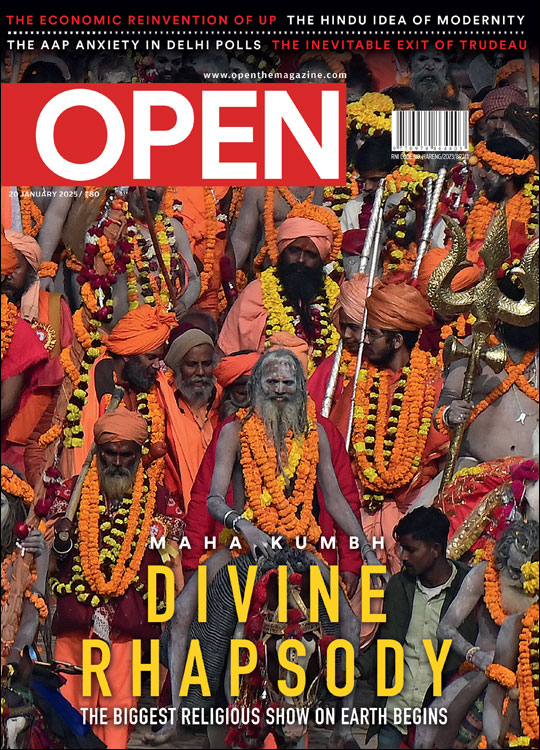


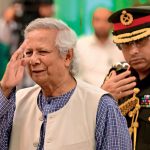
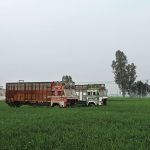

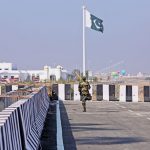

More Columns
What does the launch of a new political party with radical background mean for Punjab? Rahul Pandita
5 Proven Tips To Manage Pre-Diabetes Naturally Dr. Kriti Soni
Keeping Bangladesh at Bay Siddharth Singh